Cuba: A Destination. . . Day 6, Santiago de Cuba

Day Six: Santiago de Cuba
All major, early Spanish settlements were placed strategically on a deep bay with a narrow entrance to guard against pirates and other foes, but Santiago de Cuba’s entrance is especially dramatic with the massive El Morro fortress towering over the straits.
Built in 1637, the Castilla de San Pedro de la Roca, as this UNESCO World Heritage site is named, is the best preserved and most complete example of Spanish-American military architecture in the Cuba. Another special feature of Santiago is its magnificent scenery backed 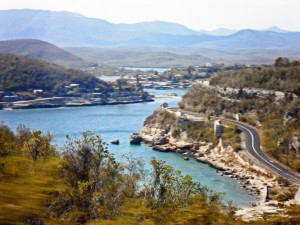 by the Sierra Maestra Mountains where Fidel Castro prepared his guerrillas for the revolution to overthrow the Batista regime.
by the Sierra Maestra Mountains where Fidel Castro prepared his guerrillas for the revolution to overthrow the Batista regime.
Santiago, the second largest city in Cuba, is celebrating her 500th anniversary this year. She is the birthplace of the revolution – not just Fidel’s but of revolts as early as the 16th century and of many of Cuba’s national heroes. The most African, the most ethnically diverse, and the most Caribbean of Cuba’s cities, Santiago is often credited with being the birthplace of Cuba’s music, as well.
Our visit began in the heart of the city at Parque Cspedes, up the hill from the port. At the center of the square is the monument to Carlos Manuel de Cspedes, a lawyer and plantation 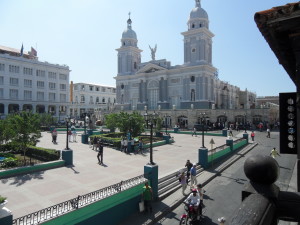 owner, who in 1868, freed his slaves and declared Cuban independence, sparking the Ten Years’ War against the Spanish government of Cuba. Although the revolution was not successful, Cspedes is called Padre de la Patria (Father of the Country) and credited with laying the foundation of Cuba’s Second War of Independence led by Jose Marti in 1895.
owner, who in 1868, freed his slaves and declared Cuban independence, sparking the Ten Years’ War against the Spanish government of Cuba. Although the revolution was not successful, Cspedes is called Padre de la Patria (Father of the Country) and credited with laying the foundation of Cuba’s Second War of Independence led by Jose Marti in 1895.
The square is dominated by the Cathedral de Nuestra Senora de la Asuncion, dating from 1524, but rebuilt many times, and surrounded by historic buildings. Left of the cathedral is the Hotel Casa Grande, once the gathering 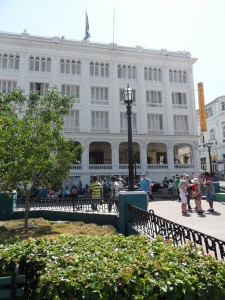 place of the city’s elite and famous visitors, including Babe Ruth. Apparently, it become a popular hangout of Cuban rebels and U.S. spies prompting writer, Graham Greene, to use it as the setting for his book, Our Man in Havana.
place of the city’s elite and famous visitors, including Babe Ruth. Apparently, it become a popular hangout of Cuban rebels and U.S. spies prompting writer, Graham Greene, to use it as the setting for his book, Our Man in Havana.
Across the square from the cathedral is the Ayuntamiento, or town hall, from where on Jan. 1, 1959, Fidel Castro 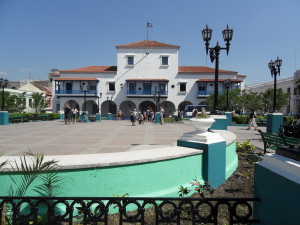 declared the victory of the Cuban Revolution.
declared the victory of the Cuban Revolution.
On the west corner, Casa de Velazquez is the oldest house in Cuba, built for the governor in 1516, soon after 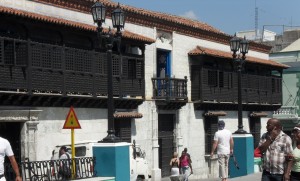 Santiago was founded. Now renovated, it houses the Museo de Ambiente Historico
Santiago was founded. Now renovated, it houses the Museo de Ambiente Historico
Cubano with a collection of European furniture, paintings, ceramics and other antiques contributed by Cubans from around the island.
What is particularly interesting about the house is its pure Moorish style – the purest this writer has seen anywhere in the Americas. It’s a 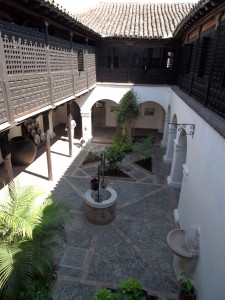 splendid reminder that the early Spaniards who settled the New World had only recently driven the Moors from Spain but their architectural designs as seen in the Alhambra in Granada and other great Moorish legacies were brought with them to the New World.
splendid reminder that the early Spaniards who settled the New World had only recently driven the Moors from Spain but their architectural designs as seen in the Alhambra in Granada and other great Moorish legacies were brought with them to the New World.
If you have time to linger, the streets around the square are replete with historic homes and buildings, some housing cafés, museums and centers of artists and musicians.
Our visit took us to the western edge of Santiago to the large Santa Ifigenia Cemetery where many famous Cubans are interned — none more important than Jose Marti, 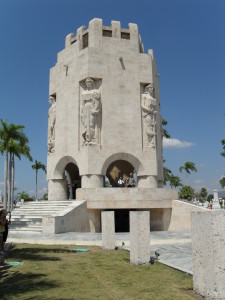 Cuba’s national hero who died in the island’s struggle for independence.
Cuba’s national hero who died in the island’s struggle for independence.
His monumental mausoleum is surrounded by the figures of six women, each representing a province of Cuba. The sarcophagus of Marti, draped in the Cuba flag, lies at the center of the mausoleum, surrounded by wall plaques and 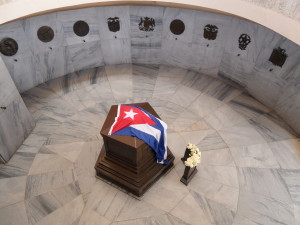 earth from each of the Latin American countries whose independence was inspired by Marti.
earth from each of the Latin American countries whose independence was inspired by Marti.
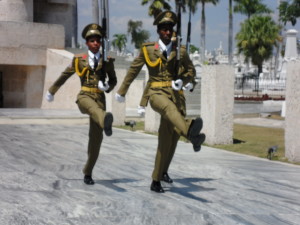 Every 30 minutes, an armed guard of three soldiers goose-step to martial music in a changing of the guard ceremony.
Every 30 minutes, an armed guard of three soldiers goose-step to martial music in a changing of the guard ceremony.
En route to lunch, we stopped at the shop of the rum factory that was the Bacardi Rum factory before the 1959 Revolution. There, we sampled
several rums available for sale (starting from
US$8), as was Cuban coffee (about US$3 per 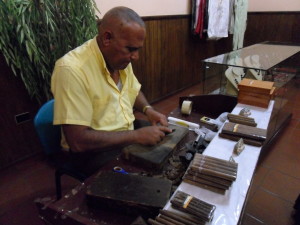 pound) and watched a workman roll Cuban cigars which were available for from US$3.
pound) and watched a workman roll Cuban cigars which were available for from US$3.
After lunch at a waterside café, we drove to the east side of the harbor to the hill top 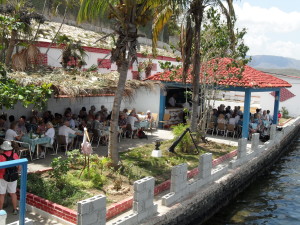 commanded by the amazing El Morro fortress and a spectacular view over Santiago stretching from the coast to the Sierra Maestra mountains behind the city.
commanded by the amazing El Morro fortress and a spectacular view over Santiago stretching from the coast to the Sierra Maestra mountains behind the city. 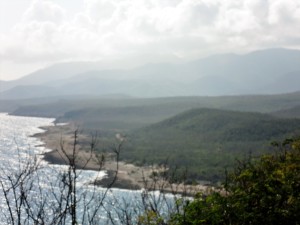
The pathway to El Morro was lined with stalls selling nice souvenirs and some amusing art. 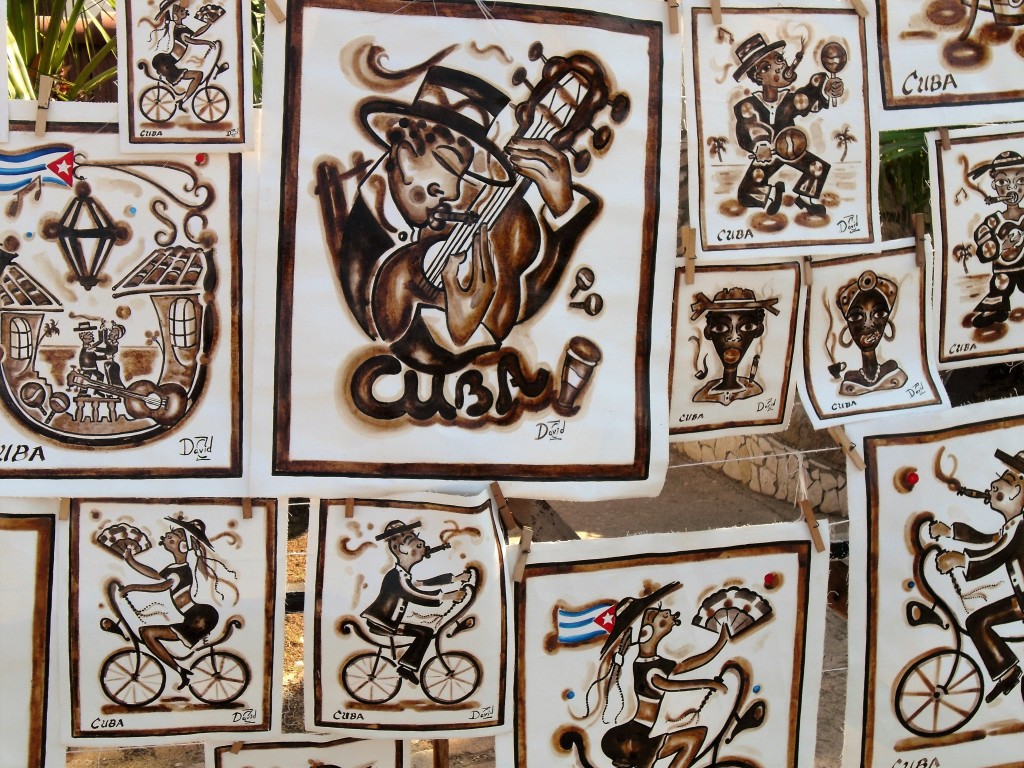
Upon return to the city, on a hill about a mile from the port, we made a brief stop at San Juan Hill, the site of a decisive battle in the Spanish–American War, which Cubans are quick to 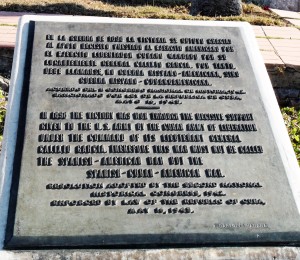 tell you, was the Spanish-Cuban-American War. In fact, there’s a plaque at the site with precisely that reminder.
tell you, was the Spanish-Cuban-American War. In fact, there’s a plaque at the site with precisely that reminder.
After the USS Maine was sunk in Havana harbor in 1895, the U.S. entered the Spanish-American war. The battle for San Juan Hill (July 1, 1898) was the bloodiest of the war and 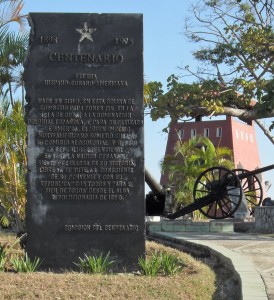 became famous by press reports as the great victory for the Rough Riders under their commander, Theodore Roosevelt, the future president. Two weeks later, Santiago fell and Spain signed a peace treaty giving control of Cuba to the U.S.
became famous by press reports as the great victory for the Rough Riders under their commander, Theodore Roosevelt, the future president. Two weeks later, Santiago fell and Spain signed a peace treaty giving control of Cuba to the U.S.
So much of Cuba’s history and culture is tied to this beautiful, charming city and is being celebrated in its 500th Anniversary festivities throughout the year. We wished we could have stayed longer.
I left Cuba knowing I wanted to return.
xxxxxxxxxxxxxxxxxxxxxxxxxxxxxxxxxxxxxxxxxxxxxxxxxxxxxxxxxxxxxxxxxxxxxxxxxxx
NEXT: About Celestyal Cristal and Tips on Planning Your Cruise

Leave a Reply